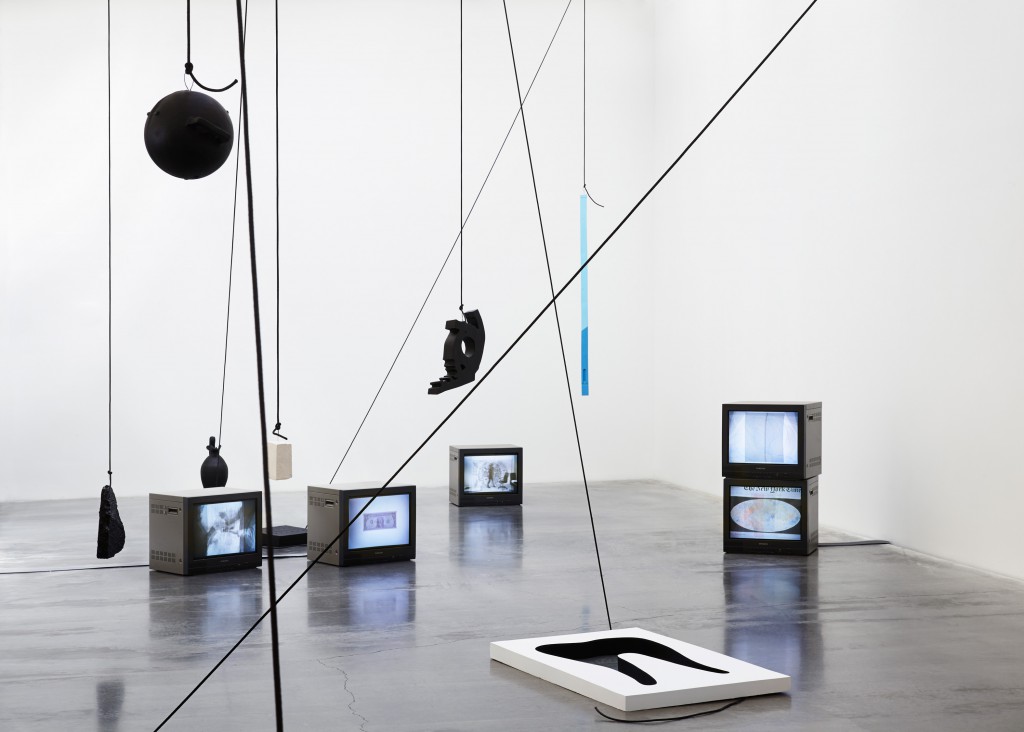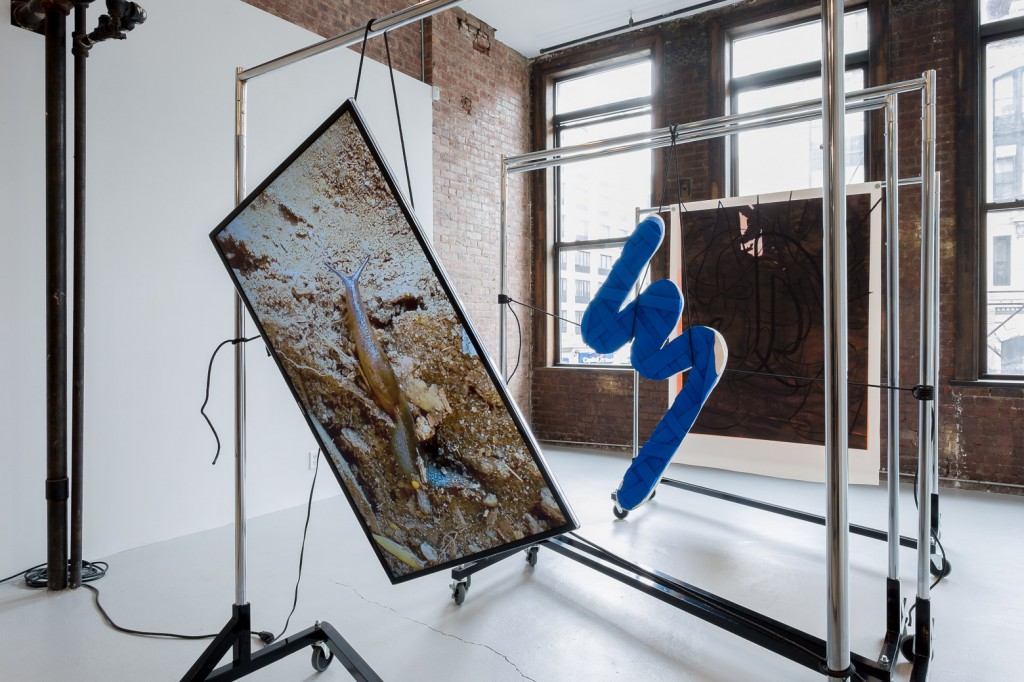Erika Vogt, Stranger Debris Roll Roll Roll, 2013 and installation view of Slug, 2015
Erika Vogt might alternately be described as a sculptor, printmaker or video artist, but, like so many of her peers, these labels merely point at the edges of something deeper. Born out of the tradition of experimental film, Erika brings to bear many of the techniques from that practice to her sculptures and installations – collaging, layering and cutting up different material.
Erika Vogt, born 1973, is a Los Angeles based artist represented by Overduin & Co. in Los Angeles and Simone Subal Gallery in New York City. She received an MFA from California Institute of the Arts and a BFA from New York University.
Vogt uses a range of media and techniques in order to explore the mutability of images and objects. Within her installations, she fuses elements of sculpture, drawing, video, and photography to produce multilayered image spaces. She challenges prescribed art-making systems, conflating and confusing their logic, as sculptures take on the properties of drawing and photographs take on the nature of film. Building on her background in experimental filmmaking, Vogt’s visually dense videos combine both still and moving images, digital and analog technologies, and playfully incorporate drawings and objects from her previous projects. In her recent work, exemplified by installations such as Notes on Currency (2012), The Engraved Plane (2012), and Grounds and Airs (2012), Vogt took as her subject the ritual use and exchange of objects, such as currency, and investigated the empathetic relationship between objects and people.
To read Slug through this gift of words (albeit someone else’s) as “an extension of the interior life of the giver, both in space and time, into the interior life of the receiver” allows us to perceive the slug in its dialectical sense: as a $50 gold coin, for sure, but also its opposite, a counterfeit, a token used to subvert a slot machine’s understanding of exchange value. We experience Slug as the implicit trace of productive activity, but it also transforms us (the viewer) into the slug, the interval between things, the breath or gap. “But blank lines do not say nothing,” as Carson writes.
Through her work, Vogt attempts to gesture towards community. Not in the educational sense or what we conflate with “social practice” as an institutional turn, but in the old way, the way it used to mean friendship, comradeship, living and working together. The sculptures shade, point, protect and interact with each other, creating new perspectives on and for one another. Bringing to mind Shelly Silver’s Things I forgot to tell myself, in which the filmmaker’s scrunched up hand forms an aperture through which we see the city, we should read Slug together. It is through their implied social relation that these objects reveal sincerity. Vogt refuses to take the stance of either cynical embrace or pseudo-rebellious anti-art, meaning there is instead an untypical openness to the work. It yearns to protect, to support.
Source: Art News, September, 2015.

